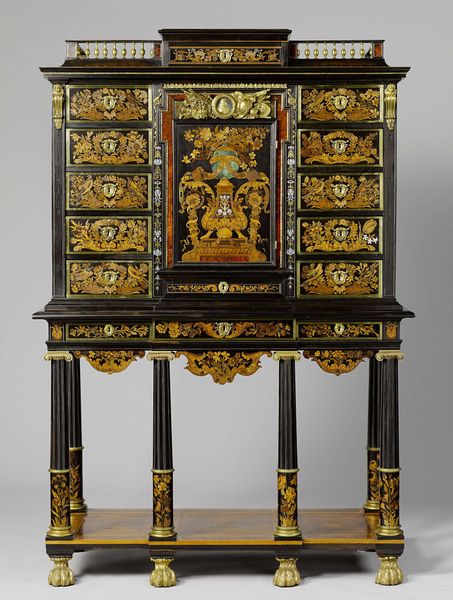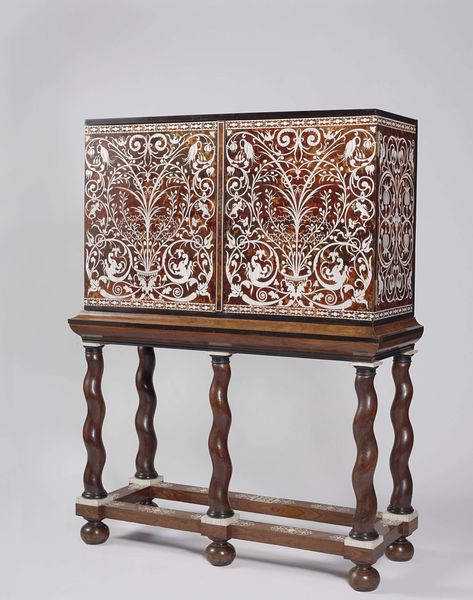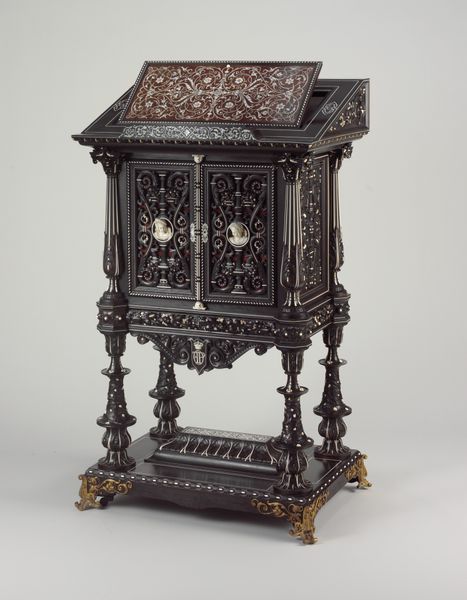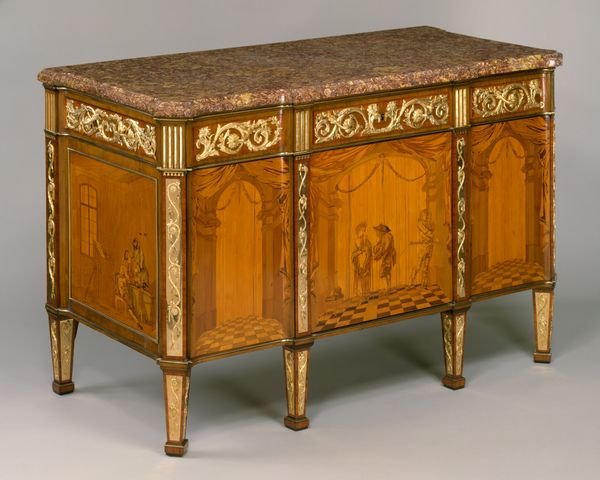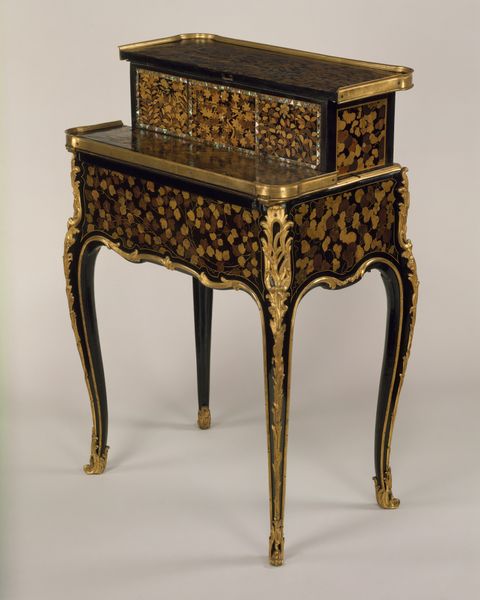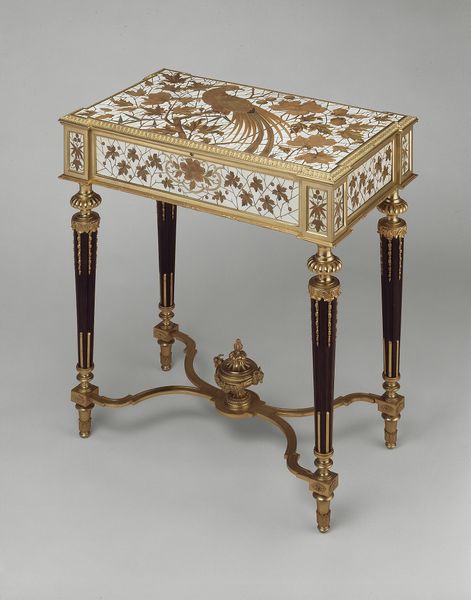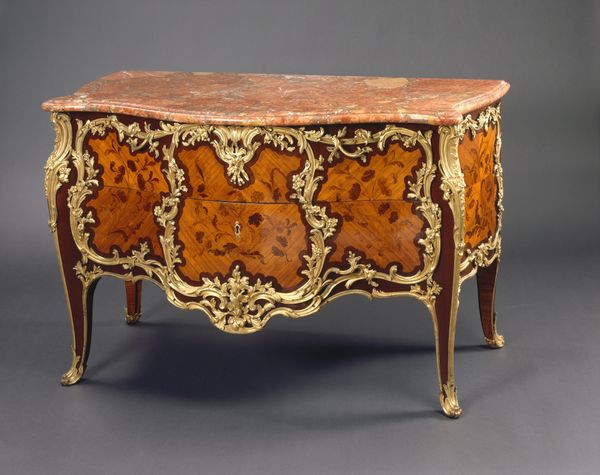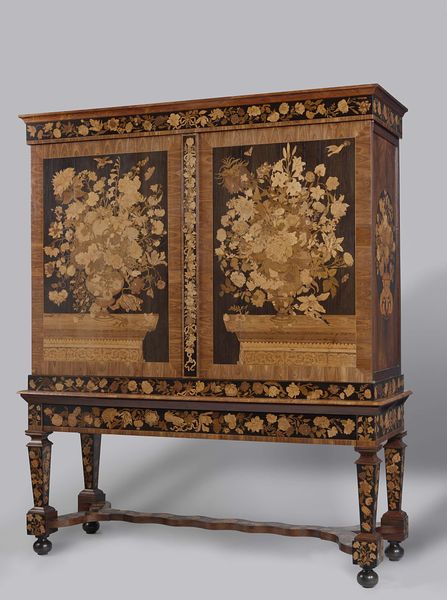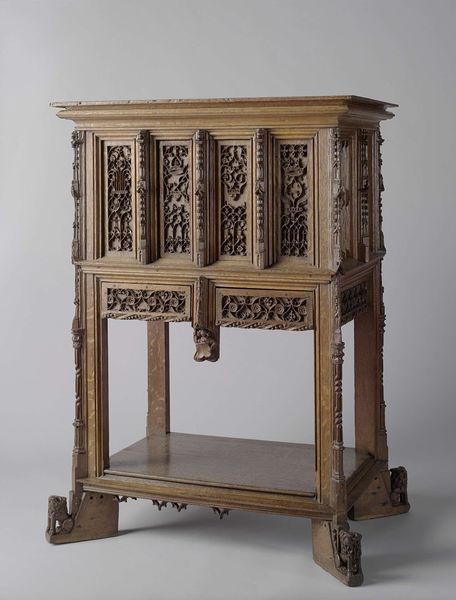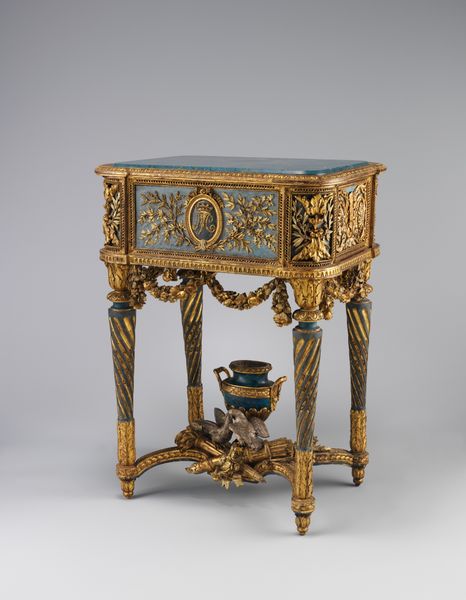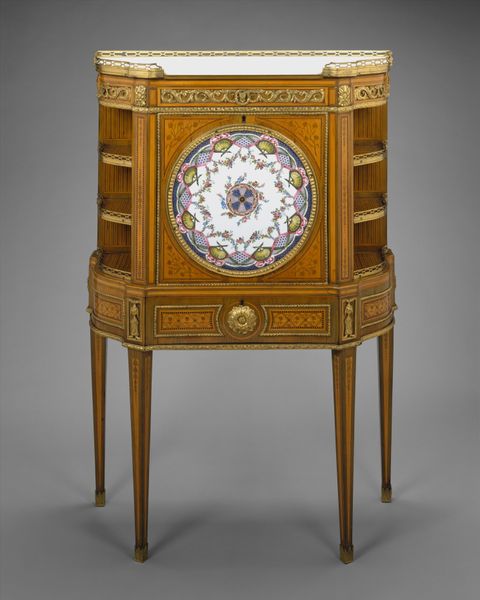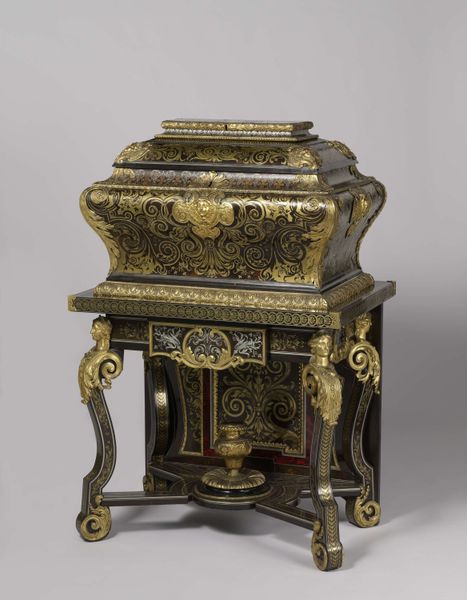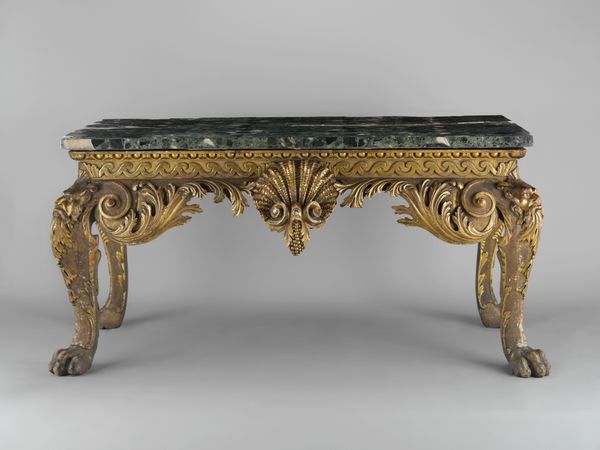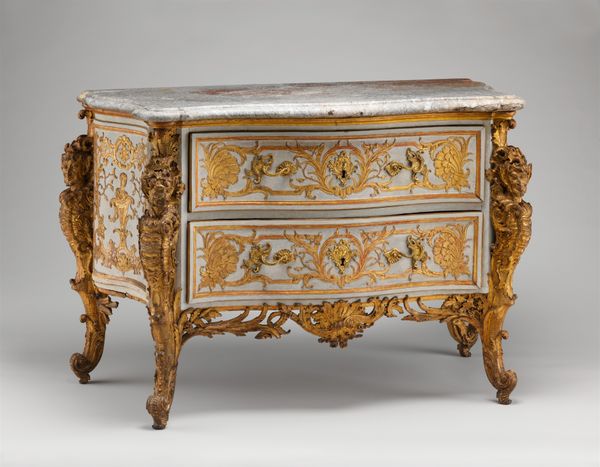
carving, wood
#
wood texture
#
carving
#
baroque
#
wooden base
#
wooden texture
#
wood
#
decorative-art
Dimensions: height 128.5 cm, width 84.5 cm, depth 35.0 cm, width 84.0 cm, depth 34.0 cm
Copyright: Rijks Museum: Open Domain
Editor: Here we have "Cabinet" made around 1655 to 1660, created by Pierre Gole, constructed using wood and carving techniques. What immediately stands out is its incredible detail; the floral patterns give it an almost joyful aesthetic, despite being a seemingly functional object. What do you make of it? Curator: The work certainly presents a rich formal vocabulary. Consider first the sheer density of surface ornamentation; the eye is given no respite. Floral marquetry proliferates, contained within the rigid geometry of the cabinet’s form. Note how the verticality of the supporting columns contrasts with the horizontal emphasis of the drawers. Do you see how the light reflects off of different parts of the wooden surface and the varying color hues on it? Editor: Yes, the darker wood outlining the drawers, alongside the ivory handles, provides an arresting counterpoint to the floral design, creating that interesting dichotomy you mentioned. There is a lot of verticality too with those leg columns supporting it all. It's almost like looking at a very ornate architectural model. Curator: Precisely! And consider the semiotics of the materials themselves: the juxtaposition of common wood rendered precious through meticulous craftsmanship and those rare elements evoking luxury and exclusivity. Note too the cabinet’s elevated position, literally raised upon a pedestal. One might interpret this elevation as signifying the preciousness of its contents, imbuing the functional object with an almost sacred aura. What does the composition of base to support, surface design and handles create as a singular expression for you? Editor: It suggests an opulence, that status of its function isn't so utilitarian as just being used for storage purposes, as the expression pushes into decorative standing. But thinking about utility: the cabinet is small with what seem like little drawers; it might have been used to keep keepsakes like jewellery or accessories safe, or some small mementos of love and life. I didn’t really appreciate it before we began, now I think it makes me realize just how material and design creates more meaningful connection with objects. Curator: Indeed, analyzing its formal elements grants us valuable insights. Every element – the textures, arrangement of lines and volume and the palette selected to finish are speaking with and against each other to elicit the piece as more than what you see is what you get. A rich intersection of functionality, craftsmanship, and the complex social world for which this artifact was produced.
Comments
rijksmuseum about 2 years ago
⋮
Gole, originally from Bergen in what is now the province of Noord-Holland, established himself in Paris around 1643, where he soon made a name for himself. Already in 1651 he was appointed court cabinetmaker by King Louis XIV. This cabinet is decorated with floral marquetry, an ornamental technique that was probably invented and disseminated by Gole. The small lock plates were originally made of gilt bronze; the little ivory shields were applied later.
Join the conversation
Join millions of artists and users on Artera today and experience the ultimate creative platform.
